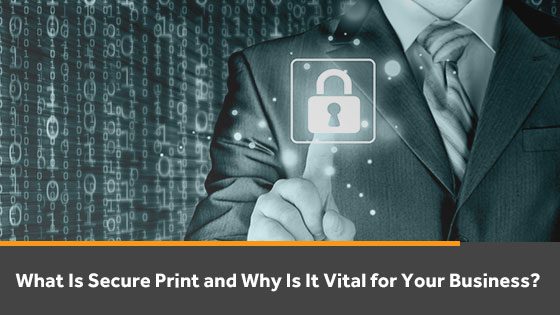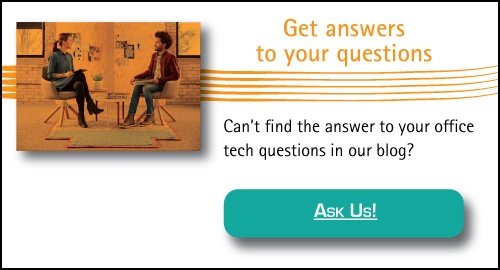Secure print refers to printing jobs that adhere to a specific privacy standard to prevent unauthorized access to printed information. The term applies to both networks and hardware setups.
Fundamentally, the tools and software used in secure print address issues like access levels and the need to restrict printing access according to who is using the machine. For example, a secure print solution could include verification via PIN numbers or other security measures.
This is aimed at ensuring that the user who has print privileges and is expected to perform the print job in question is on hand to pick up the job, protecting the document’s privacy.
Secure print software meets the needs of the age of technology. It can comply with standards such as PIPEDA, which regulates the way Canadians’ personal data and information is stored, processed or revealed. Secure print can also be custom-made for the needs of a particular corporation.
Experts define print security as its own discrete category amongst a broader security system. A critical distinction must also be made between various secure print technologies.
Locked Print
When a printing job is sent to a printer, it immediately prints out and remains sitting in the tray until someone picks it up. Because of this, personally identifiable information can circulate around your office.
This poses a severe information security risk. In the very least, employees may have to reprint missing jobs, which further drives up costs and recreates risk.
One form of secured print is what’s referred to as “locked print.” With locked print, documents won’t print before being released by the user that has been authorized to print. The designated user can only authorize the print job from the physical device.
Documents under locked print do not sit in the tray where they can be picked up by an undesignated user. Documents stored in the printer’s memory cache are encrypted. This is crucial in that it protects data even if the printer’s physical hard drive is stolen.
Follow Me Print
The other leading form of secure print is known as “follow me print.” Follow me printing has become a growing trend in recent years. Due to both its convenience and security, follow me print solutions have become a rising trend across a variety of different print environments.
On the surface, follow me printing looks quite similar to locked printing. Follow me print also requires designated user authentication, meaning only the authorized person who can complete a particular print job. The user must be physically present at the machine to do so.
In addition, follow me print gives users the ability to release their print jobs from other associated devices. This both protects privacy, reduces waste and improves flexibility. In the event that a printer is malfunctioning, the ability to release a print job lets users simply move on to the next available printer.
Two other features of follow me print include delegated printing and personal printing. Delegated printing allows users to permit another user to authenticate a print job of their choice. This further enhances productivity while maintaining the same level of security and privacy.
Follow me printing is also more personal. Each user has their digital portion of the printer distributed throughout a network of connected print devices. This way, users can handle confidential information without much concern for security-related issues.
Lock Down Your Documents with Secure Print
All in all, secure print is a necessary component of printing infrastructure. Without secure print, there are many potential vulnerabilities present in a printing system.
Many companies don’t take the threat of unsecured printers seriously. The risk may begin with employee misuse and lost or stolen physical documents, but it doesn’t end there.
Unsecured printers can post a significant risk to your IT security environment. Network printers and multifunction devices that aren’t adequately secured can lead to a network breach, data theft, and worse.
Follow me print and locked print provide excellent protection measures. While they are only two parts of a potential secure print solution, they go a long way toward a safer printing system.
Contact us today to learn more about how to secure your printers.
Cory Porteous
Marketing Manager
Office Interiors



